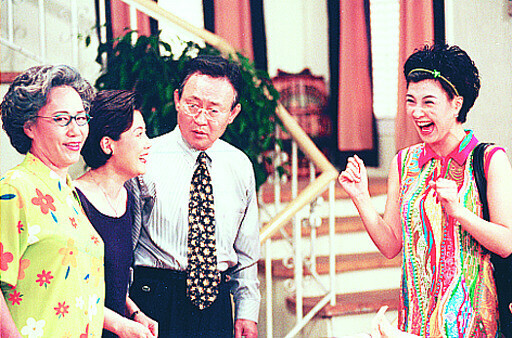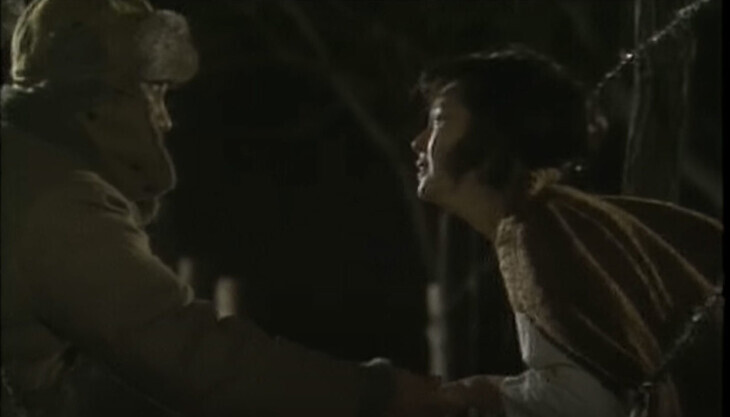hankyoreh
Links to other country sites 다른 나라 사이트 링크
[TV review] As former refugees, Koreans should welcome those arriving here from distant places

As episodes of the TV show “LA Arirang” (1995–2000) went up on the SBS YouTube channel “BACKENT - SBS Old Entertainment,” viewers began gathering in the comments section and humming along to the theme song.
“LA Arirang” is symbolic as the first sitcom that future South Korean sitcom maestro Kim Byung-wook took part in. It also holds scarcity value as a work that depicts the joys and pains of Koreans living in the US.
Before, the show was too old to be found anywhere online, living on only in the memories of its fans. But this August, 21 years after the show went off the air, episodes began appearing again on YouTube.
For someone like me who remembered the show from a childhood in the 1990s, and for those who only heard rumors that such a sitcom existed, gathering to watch “LA Arirang” offers the feeling of truly traveling back in time.
The lives of immigrants: “Longing during the day, loneliness at night”At the time of its run, the show faced criticisms for its failure to truly reflect some of the actual issues faced by Koreans, including racism, frustrations within mainstream society, and generational conflict.
But to watch “LA Arirang” today is to see quite a few moments where it depicts the culture clashes experienced by members of the older generation who had not let go of Korean attitudes and habits.
The character Se-yoon (Kim Se-yoon), a Korean-American lawyer, attempts to match his brother-in-law Young-bum (Lee Young-bum) — someone who has had trouble adapting to life in the US — with an employee in his office named Kyung-soon (Jung Kyung-soon). To his surprise, Young-bum ended up falling in love with an American woman instead.
Se-yoon’s mother-in-law Woon-kay (played by the late Yeo Woon-kay) is arrested and ordered to do community service for picking ferns in a park with her friends. She is unable to comprehend why people are not allowed to pick ferns in the US when people do it all the time back in Korea. Despite moving to the US to pursue the “American Dream,” she is unable to adapt to the local culture, feeling more of a connection to her own.
Unconsciously, the characters reveal a preference for associating only with other Koreans.
Se-yoon works with a local Korean-American association, while his wife Jung-soo (Park Jung-soo) is a DJ for a Korean radio station. Jung-soo’s sister Mi-ri (Kyeon Mi-ri) and brother-in-law Jung-sub (Lee Jung-sub) rent videotapes of Korean TV programs to local Koreans, and Young-bum, who is Jung-soo’s brother, works as a guide for Korean tourists.
The lives of Kim Se-yoon and his family on “LA Arirang” are filled with “Korea.” It makes sense: while they may have immigrated to a distant land to pursue their dreams, a life spent among people who speak a different language and have different cultural practices truly is one of “longing during the day and loneliness at night.” The characters would surely have sought out other Koreans who spoke the same language, ate the same food, and shared the same culture to assuage those feelings of homesickness and aching isolation.
In retrospect, “LA Arirang” seems to be part of an effort to adapt the contemporary US sitcom to the Korean context. In terms of the sets, the family composition, and the protagonists’ financial situation, it calls to mind Black American family sitcoms such as “The Cosby Show” (1984–1992) or “The Fresh Prince of Bel-Air” (1990–1996). The influences on “LA Arirang” are clear in that they are all narratives of people working hard to succeed as members of minority ethnicity in white-centered mainstream society.
At the same time, “LA Arirang” is also situated in the context of a “Korean diaspora wave” that was emerging around the same time.
It was during the 1990s that Korean TV shows and movies began making overt references to the Korean diaspora. As the chaotic situation of clashing between the development dictatorship and anti-authoritarian movement began to stabilize with South Korea’s democratization, there was a collective outpouring from creators who wanted to deal with aspects of Korean modern and contemporary history that had been difficult to address before.

In 1991, the movie “Susanne Brink’s Arirang,” directed by Chang Gil-soo, confronted Korea’s past as a “child exporter,” where parents faced with grinding poverty sent their child overseas as adoptees.
The MBC drama “Eyes of Dawn” (1991–1992) told the story of young Koreans who had lost their homeland, forced to travel around to different countries in a struggle to survive.
Another MBC drama, “Kareisky” (1994–1995), looked at the difficult lives of Koreans who flee to Russia’s Primorsky Krai region due to threats to their safety before going on to settle in Central Asia.
Also on MBC, the series “1.5” (1996) focused on “generation 1.5” Korean-Americans who leave for the US in pursuit of the American Dream but end up facing identity confusion amid the racism and culture shock they experience.
The movie “Henequen” (1996) told of the lives of Koreans forced to work on an agave farm on the Yucatan Peninsula as victims of the Oriental Development Company.
Most recently, the film “Ode to My Father” (2014) relates the history of the Korean diaspora through workers sent to Germany as miners and nurses and children adopted as war orphans.
As these movies and programs show, Koreans have taken every opportunity to reflect on the diaspora’s history and share all the pain that came with it through works of popular culture.
Historically, Koreans have left their homeland and settled in different countries for reasons of colonization, war, political turmoil, and poverty. There are different names assigned to them: exiles, refugees, orphans, immigrants, migrant workers, and so on.
Their long history has also been recorded through works of popular culture, helping to ensure they are remembered by future generations.
With all this experience sharing in the pain of that history, wouldn’t it be great if we were more welcoming to those who have left their homes behind and come to Korea as a place where they can escape chaos? After all, we share the memories of overseas Koreans who were forced to leave the peninsula and travel to distant lands for different reasons, and we understand the context of the discrimination and sorrow they experienced.
If any of us has had to dab away the tears watching “LA Arirang,” “Eyes of Dawn,” or “Ode to My Father,” that’s all the more reason we should reach out more warmly and take the hands of those arriving here from distant places to seek our help.
They are the hands of people filled with “longing during the day and loneliness at night,” living in a country where the language and culture are different.
By Lee Seung-han, TV columnist
Please direct comments or questions to [english@hani.co.kr]

Editorial・opinion
![[Editorial] Intensifying US-China rivalry means Seoul must address uncertainty with Beijing sooner than later [Editorial] Intensifying US-China rivalry means Seoul must address uncertainty with Beijing sooner than later](https://flexible.img.hani.co.kr/flexible/normal/500/300/imgdb/original/2024/0517/8117159322045222.jpg) [Editorial] Intensifying US-China rivalry means Seoul must address uncertainty with Beijing sooner than later
[Editorial] Intensifying US-China rivalry means Seoul must address uncertainty with Beijing sooner than later![[Column] When ‘fairness’ means hate and violence [Column] When ‘fairness’ means hate and violence](https://flexible.img.hani.co.kr/flexible/normal/500/300/imgdb/original/2024/0516/7417158465908824.jpg) [Column] When ‘fairness’ means hate and violence
[Column] When ‘fairness’ means hate and violence- [Editorial] Yoon must stop abusing authority to shield himself from investigation
- [Column] US troop withdrawal from Korea could be the Acheson Line all over
- [Column] How to win back readers who’ve turned to YouTube for news
- [Column] Welcome to the president’s pity party
- [Editorial] Korea must respond firmly to Japan’s attempt to usurp Line
- [Editorial] Transfers of prosecutors investigating Korea’s first lady send chilling message
- [Column] Will Seoul’s ties with Moscow really recover on their own?
- [Column] Samsung’s ‘lost decade’ and Lee Jae-yong’s mismatched chopsticks
Most viewed articles
- 1[Editorial] Transfers of prosecutors investigating Korea’s first lady send chilling message
- 2[Exclusive] Unearthed memo suggests Gwangju Uprising missing may have been cremated
- 3[Column] US troop withdrawal from Korea could be the Acheson Line all over
- 4[Column] When ‘fairness’ means hate and violence
- 5[Editorial] Intensifying US-China rivalry means Seoul must address uncertainty with Beijing sooner t
- 6‘Shot, stabbed, piled on a truck’: Mystery of missing dead at Gwangju Prison
- 7S. Korea “monitoring developments” after report of secret Chinese police station in Seoul
- 8China calls US tariffs ‘madness,’ warns of full-on trade conflict
- 9Seoul government announces comprehensive measures to prevent lonely deaths
- 10[Column] How to win back readers who’ve turned to YouTube for news